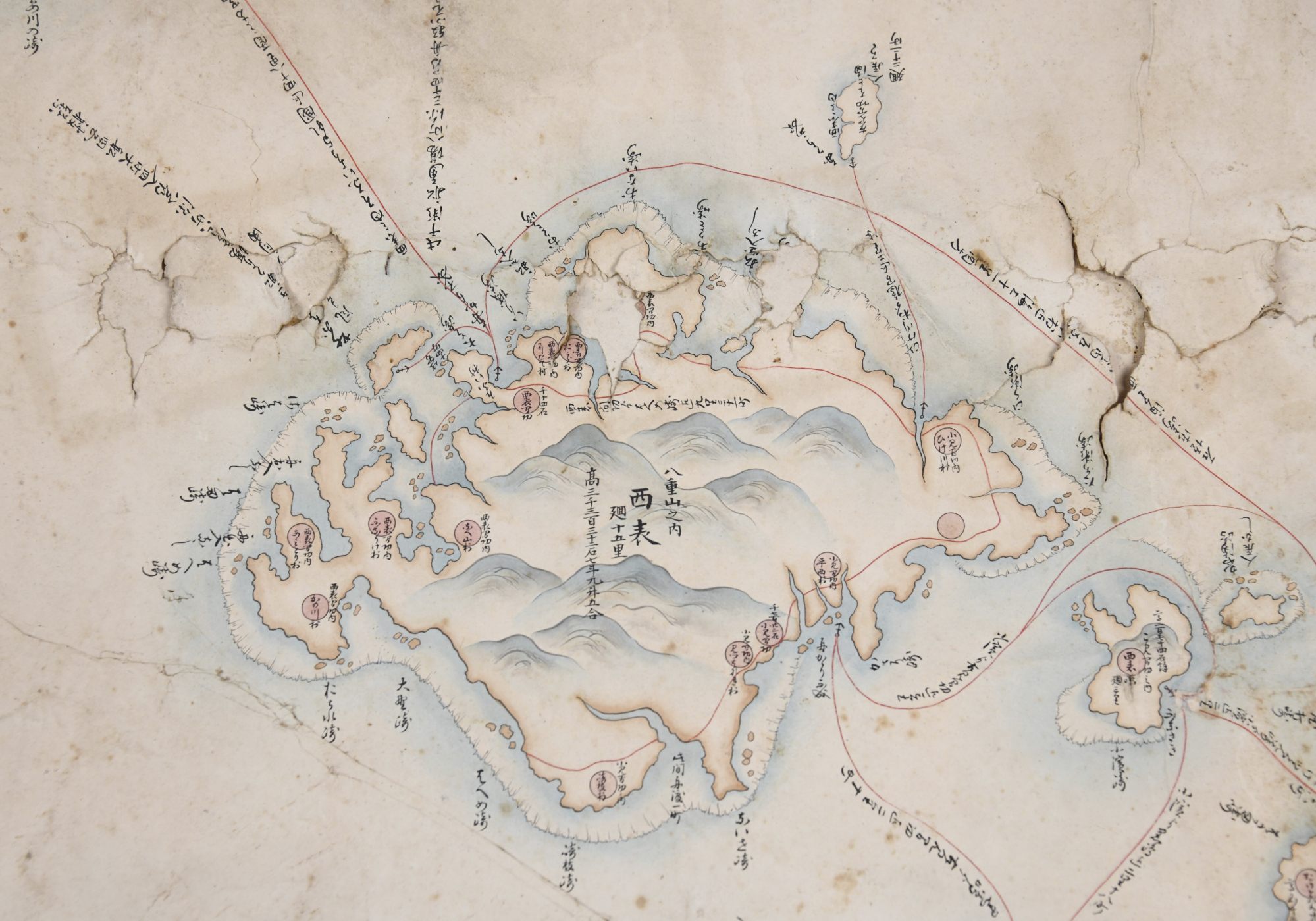
Return of Japan’s ‘culturally significant’ treasures to Okinawa from US sparks joy
- The treasures were supposedly looted by US troops during the Battle of Okinawa in WWII and found in an attic in Massachusetts
- Family members of a veteran US soldier have discovered that the treasures were in an FBI file and contacted the agency for their return
“It is a great joy for the people of the prefecture to have this Okinawan treasure back, allowing us to directly connect with the days of the Ryukyuan kingdom,” said Okinawa Governor Denny Tamaki after the artefacts were handed over last week.
The 22 artefacts – including six painted scrolls from the 18th and 19th centuries depicting kings of the Ryukyu Kingdom, ceramics, a teapot and a hand-drawn and annotated map of the Okinawan islands – were discovered by family members of a former WWII soldier as they cleared his home after his death last year.
Mystery still surrounds how the veteran acquired the items as he never served in the Pacific theatre during the conflict.
The family – who has asked not to be identified - researched online and discovered that the items were in a Federal Bureau of Investigation file for stolen art, at which point they contacted the FBI’s Boston office.
US renames key military unit in Japan’s Okinawa amid perceived Chinese aggression
“They came across what appeared to be very valuable Asian art,” FBI Special Agent Geoffrey Kelly, coordinator for art theft cases in the Boston office, said in an interview posted on the agency’s website.
“Once they realised they were stolen, they reached out to the FBI,” he said.
A typewritten letter that was with the items made it clear that they had been collected in Okinawa in the last days of the war “and therefore most likely had been looted,” Kelly said.
The investigative team compared the black and white images of the missing artwork with the recovered items and they “were a pretty good match,” Kelly said.
“There is something very climactic about unfurling a scroll,” he added. “I didn’t do it when I recovered it initially because I certainly didn’t want to damage it … so really the first time they were unfurled, that we could see them, was at the Smithsonian [Museum] with the experts.

“It’s an exciting moment when you watch the scroll unfurl in front of you and you witness history and something that has not been seen by many people in a very long time.”
Describing the items as being “culturally very significant” Kelly said the cache was “especially important because they were [of] Okinawan kings dating back to the 19th century and it did not take long to realise this was something that needed to be repatriated.”
Once catalogued and securely packaged, the artefacts were transported to Guam aboard a US military aircraft and handed over to the Okinawan prefectural government on March 15.
Shinako Oyakawa, an Okinawan activist, writer, and academic, agreed that the return of the artefacts was an “important symbolic event because they are all part of our identity.”
The losses include not only historical items but also family possessions, she said.

“My grandparents’ land was stolen and is now within the fences of [the US Air Force’s] Kadena Air Base and I hope that land-grab can also be reversed,” she said. “A lot of property was taken from local people and it should be returned.”
Okinawa applied for one of the king’s portraits – known as an ogoe – to be added to the FBI’s list about 20 years ago but it was thought that they would never be recovered due to the war. Before they disappeared, they had been placed in the Nakagusuku Udun residence for the Ryukyuan royal family, close to the Shuri Castle.
One of the ogoe measures 1.5 metres square and depicts the 13th century King Sho Kei, who ruled from 1713 to 1751. A second scroll, of similar size, is of the 18th monarch of the Ryukyus, King Sho Iku, who was on the throne between 1835 and 1847.
Conservators are currently cataloguing and stabilising the items before they can go on public display as soon as April.
Nine items remain on the FBI’s page for missing Okinawan items including a silk ceremonial costume made in China for a Ryukyuan king and a crown of the Sho royal family decked with gold, jade and other items.

